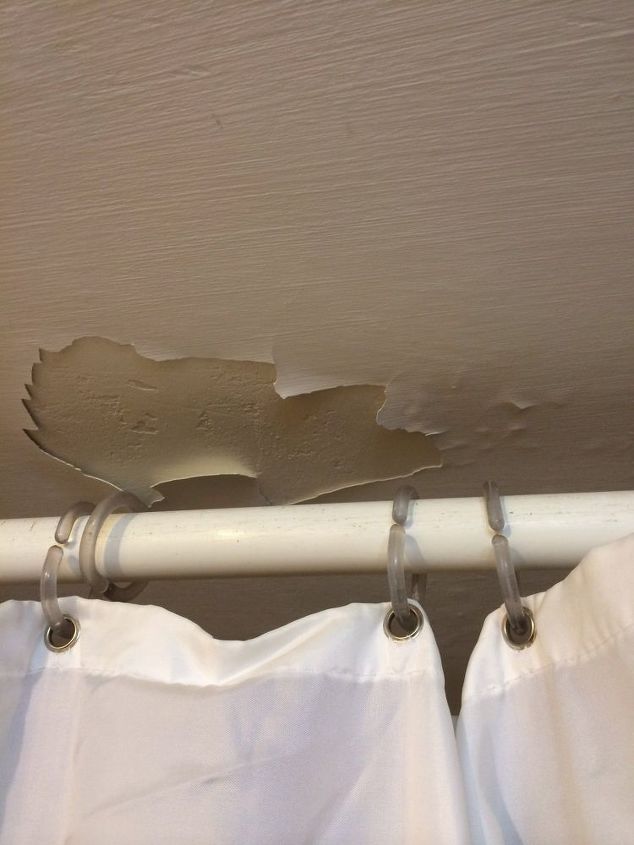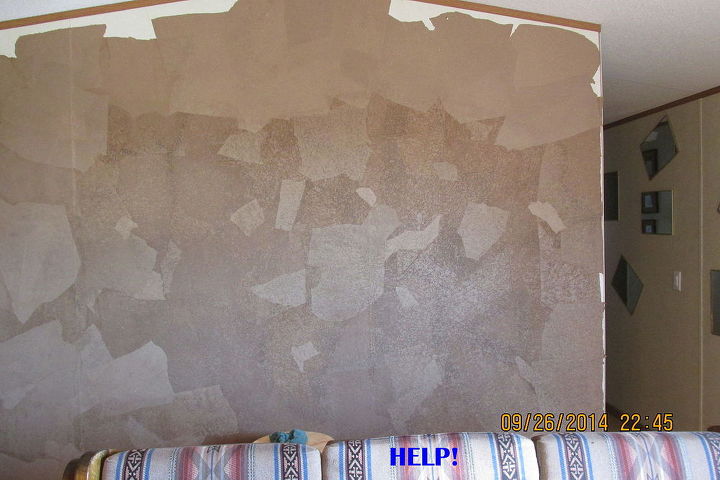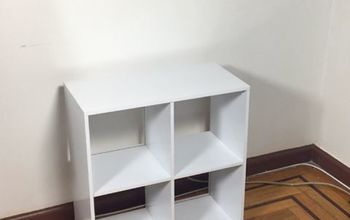I want to hide (or camouflage) wall imperfections in 100 yr old home.

Related Discussions
How to get rid of mice?
We seem to have some unwelcome Mickeys and Minnies in our house. What is the best way to get rid of them?
How to remove popcorn ceiling with asbestos?
I want to remove my popcorn ceiling, but it has asbestos in it. How do I go about this safely?
How to caulk baseboard gaps?
How do I fill gaps at baseboard, should I caulk? If so, does anyone know how to caulk baseboards?
How to fix squeaky hardwood floors?
How do I fix squeaky hardwood floors?
Water damage on bathroom ceiling
I am about to patch up this water damage on a low bathroom ceiling. What can i paint/seal the entire ceiling with to minimize future water damage? the ceiling is very... See more
Brown paper floor/wall help
I have purchased a brown roll of paper because I wanted a consistent "vein" look through out the walls and the brown paper bags I was getting would sometimes be "vein... See more






Hi Katherine: I haven't actually used this technique so I'm of no help in that, but as I was reading your question, I could picture it and I personally think it will be awesome. I think with a 100 year old house, the glazing will give it that "movement" that will look so good. Old world charm as you say. Sorry I can't be of help with techniques on how to apply it though! I've seen it many times and feel that it would be a great decision.
Thank you for your vote of confidence! I guess we really don't know how something will turn out, until it's finally done. Thank you for taking the time to read my post/question & giving me you're sincere feedback. I really do appreciate it🌞
We lived in an old colonial in CT for years, and several of the walls (plaster) were in bad shape. I did a technique that was really simple and looked really nice when it was done. First, get tissue paper (The plain white kind that is inside most gift boxes. It comes in sheets.) Then take each sheet and tear it in half (or whatever size you want to work with.) Crumple them into balls, then spread them out again. Now they should be wrinkled. Now, using a standard roller, roll your paint onto the wall very lightly....coverage is not really important...you just need it to be moist. Then, take the sheets of tissue paper and lay them into the wet paint on the wall..smoothing them out slightly as you go. Be sure to overlap the edges of the sheets slightly as you go as well. Then, as you are pasting the sheets on the wall, use a large flat paintbrush to "dry brush" a small amount of paint onto the paper to smooth it out more and to help attach it completely. After this dries, roll a regular coat of paint over the whole wall and let it dry. The finished result will look like a little like stucco, but much thinner and finer. It completely covered all of the cracks, dents, imperfections, etc that we had. It is very similar to the "Paper bag flooring" that is popular now....but uses tissue paper instead. Hope my explanation makes sense!
Yes it makes perfect sense! That sounds like a great idea, and I'm glad you told me about it. This is exactly what I wanted and I truly appreciate your input and idea. What I may do is one room one way and then another that way but use the same color. Thank you so much for the awesome idea!!!
I did a wall in my daughter's room with paint and glaze. The original base colour was rolled on, then the second, slightly darker, colour with the glaze added was dabbed on using old plastic grocery bags. This added depth and gave it a sort of crinkled look.
I did another wall in a similar technique using pieces of old fabric twisted and rolled down the wall after the second colour with glaze was applied. This took the colour off in a neat manner and left a nice effect but was much more difficult to get it done evenly without creating lines. And as the fabric got soaked with paint you had to use fresh pieces. In both cases, I painted the ceiling in the original base colour to keep everything coherent.
Thank you for your tips & imput from your experience working with paint mixed with glaze on walls. I never thought of the plastic bag idea and I think using the base color as the ceiling color, is the perfect solution.. as that thought never crossed my mind. I only thought to do ceiling in a cream, white or same as walls. I can actually picture it with the same base color on the ceiling and how it will complement perfectly with the paint glaze technique on walls. I'm so happy you took the time to reply and your suggestion regarding the ceiling paint,will make the transition from wall to ceiling seamless and natural. Great idea, thank you so much Dee!